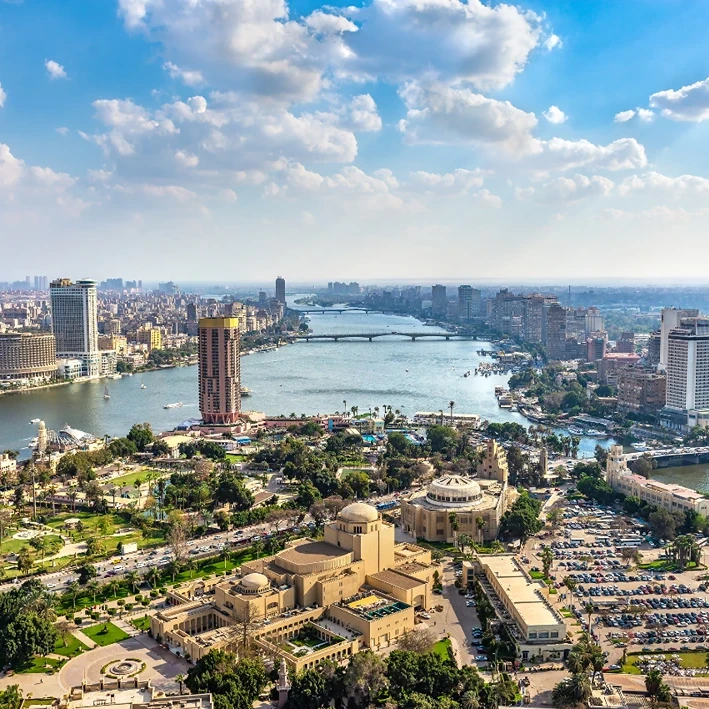Is traveling through China as challenging as some might believe, or is there an affordable way to navigate the vast nation? Unbeknownst to many, China’s public transportation landscape offers comprehensive and budget-friendly travel options, making the country surprisingly accessible for expatriates and visitors alike. With city buses costing merely 1-3 CNY and metro rides under 6 CNY, public transit in China is not only affordable but also efficient, particularly with mobile payments and transit cards simplifying the process. This article explores diverse transportation methods within China, showcasing how they ease travel for foreigners and highlight the nation’s intricate transit networks.
Table of Contents
ToggleTransportation in China: An Overview

Transportation in China is both efficient and cost-effective, making it accessible for both locals and foreigners. The public transit system is extensive, with metro systems in major cities offering widespread coverage and ease of navigation. Metro rides generally cost under 6 CNY, providing an affordable way to traverse urban areas. City buses add to the extensive network with fares ranging from 1-3 CNY, ensuring that even the most budget-conscious travelers can get around without difficulty. The Airport Express in Beijing, priced at 25 CNY, offers a convenient connection between the city center and the airport. This range of options ensures that getting around in China is not only manageable but also economical.
The use of mobile payments and transit cards further enhances the convenience of public transport. City buses and metro systems across China accept mobile payment methods, such as WeChat and AliPay, making transactions quick and seamless. This technological integration simplifies the process of purchasing tickets and adds a layer of convenience for travelers, particularly those unfamiliar with the local language. Transit cards also provide a hassle-free way to access public transportation, allowing users to tap in and out of metro stations with ease, contributing to a smoother travel experience.
Navigating Chinese Cities: Metro and Buses
In major Chinese cities, the metro system stands out as the most efficient means of public transit. With extensive urban transport networks, metros provide widespread coverage, connecting key areas and reducing travel times significantly. Metro lines are well-integrated, offering frequent services that ensure minimal waiting times. This efficiency is particularly beneficial in populous cities where traffic congestion is common. Costing generally under 6 CNY per ride, the metro offers an affordable and swift option for navigating urban landscapes.
City buses complement the metro by covering areas not directly accessible by rail. These buses are a valuable alternative, especially for reaching destinations that lie outside the metro’s reach. Fares typically range from 1-3 CNY, maintaining affordability. The integration of mobile payment options, such as WeChat and AliPay, has simplified fare transactions, making buses more accessible to foreigners. Paying with a mobile phone eliminates the need for cash and enhances the convenience of using buses for daily commutes.
- Use mobile payment options like WeChat and AliPay for seamless transactions.
- Familiarize yourself with metro lines and stops to ensure efficient travel.
- Choose the metro for its speed and comprehensive coverage.
- Download navigation apps to help with bus route planning.
- Avoid peak travel times to minimize congestion and ensure a smoother journey.
High-Speed Trains and Long-Distance Travel
High-speed trains, commonly referred to as bullet trains, offer a swift and comfortable mode of intercity travel in China. They connect major cities with remarkable efficiency, often reaching speeds of up to 350 kilometers per hour. This speed drastically reduces travel times, making them a preferred choice for long-distance journeys. Passengers enjoy modern amenities such as spacious seating and onboard dining, enhancing overall comfort. Booking in advance is advised, especially during peak travel seasons, to secure a seat and potentially lower fares. High-speed trains are an excellent option for travelers seeking a balance between speed and comfort in their cross-province travel.
For budget-conscious travelers, long-distance buses present an economical alternative for getting around China. Though buses take longer to reach their destinations compared to high-speed trains, they connect a wide array of cities and towns, making them invaluable for accessing less urbanized areas. The cost advantage is significant, with fares generally lower than train tickets, allowing travelers to save on transportation expenses. Long-distance buses often operate flexible schedules, providing numerous daily departures. However, travelers should be prepared for longer travel times and, in some cases, less comfort compared to trains.
| Mode of Transport | Speed | Cost | Convenience |
|---|---|---|---|
| High-Speed Trains | Fast | Higher | High |
| Long-Distance Buses | Slower | Lower | Moderate |
Domestic Flights and Air Travel in China

Domestic flights in China are a swift and convenient option for covering long distances between cities. When asked, “What is the primary advantage of domestic flights over trains for long distances?” the answer is speed. Flights significantly reduce travel time compared to even the fastest high-speed trains. With a vast network of airports across the country, domestic airlines offer numerous routes that connect major urban centers and remote regions alike. This accessibility makes air travel an attractive choice for those on tight schedules or needing to reach distant locales quickly. In addition to speed, major airlines provide competitive pricing, making flights a viable option for both business and leisure travelers. The comfort offered by modern aircraft, along with amenities like in-flight meals and entertainment, enhances the overall travel experience, making flights a preferred choice for long-distance journeys over other modes of transportation.
Booking strategies play a crucial role in securing competitive rates for flights within China. When asked, “What platforms are recommended for booking flights in China?” the answer includes Skyscanner, WeChat, and Chunar. These platforms are well-regarded for their user-friendly interfaces and capability to compare prices across multiple airlines, helping travelers find the best deals. Utilizing these platforms also allows for easy access to promotions and discounts that might not be available through direct airline bookings. Opting for early bookings can further reduce costs, as airlines often offer lower fares for those who plan ahead. By leveraging these strategies, travelers can enjoy the benefits of air travel without stretching their budgets excessively.
- Use apps like Skyscanner, WeChat, and Chunar for booking and checking in.
- Arrive early to navigate large airports efficiently.
- Familiarize yourself with airline baggage policies to avoid additional fees.
- Utilize airport express trains for convenient city connections.
Taxis and Ride-Hailing Services in China
Taxis in China are a widely available and convenient option for travelers seeking direct and efficient transport across cities. They offer a straightforward means of getting from point A to point B without the need to navigate public transit systems. Taxis can be easily hailed on the street or found at designated taxi stands near major attractions, hotels, and transportation hubs. Fares are generally reasonable, calculated by both distance and time, with initial charges varying by city. Although taxis provide a convenient solution for travelers, non-Mandarin speakers might encounter language barriers when communicating destinations or specific requests to drivers.
For those seeking an alternative to traditional taxis, ride-hailing apps such as Didi offer a user-friendly solution with added technological advantages. Didi, accessible via the WeChat app, provides an English interface that simplifies the booking process for foreigners unfamiliar with Mandarin. This feature allows users to input their pickup location and destination easily, reducing the potential for miscommunication. While Didi’s services offer the convenience of cashless payments and pre-set destinations, travelers should still be aware of potential language barriers if needing to give verbal instructions to drivers. Overall, ride-hailing apps are an effective tech tool for travel, enhancing the ease and accessibility of transportation in China.
Exploring Cities by Bicycle and On Foot
Bike sharing in China is an increasingly popular and environmentally conscious way to explore urban landscapes. When asked, “What are the benefits of renting bicycles in Chinese cities?” the answer is their eco-friendly nature and convenience. Renting bicycles and mopeds provides a sustainable option for short-distance travel, reducing reliance on motor vehicles and minimizing carbon emissions. Many cities have well-developed bike-sharing systems, enabling easy access to bicycles at various locations. This mode of transport not only supports green travel but also allows travelers to navigate congested city streets with greater ease and flexibility.
Walking in Chinese cities offers unique cultural and historical insights that are often missed when using faster modes of transport. Major cities provide free walking tours, which are invaluable for understanding local history and culture. These tours, led by knowledgeable guides, enable travelers to gain a deeper appreciation for the city’s heritage and architectural landmarks. Walking through neighborhoods allows for spontaneous discoveries and personal interactions with locals, enriching the travel experience. With the ability to stop and explore at leisure, walking is an ideal way to absorb the vibrant atmosphere and diverse cultures found throughout China’s urban areas.
Car Rentals and Self-Driving in China

Renting cars in China presents unique challenges that potential drivers should carefully consider. When asked, “Is self-driving in China recommended?” the answer is no, primarily due to the heavy traffic congestion in urban areas. While car rentals provide the freedom to explore at one’s own pace, the complexities of navigating China’s bustling cities and highways can be daunting. Drivers must understand local traffic laws, which can vary significantly from those in Western countries. Road signage, often in Chinese, may pose additional difficulties for non-Mandarin speakers. Moreover, the density of vehicles in major cities contributes to frequent traffic jams, making driving time-consuming and stressful. Understanding road conditions is crucial, as they can vary greatly between urban centers and rural areas. Despite these challenges, some travelers still opt for car rentals to access remote regions not well-served by public transport.
- Knowing local traffic laws to navigate safely.
- Understanding rental agreements and insurance to avoid unexpected costs.
- Assessing road conditions for safe travel in diverse environments.
Final Words
Navigating China’s vast landscape requires understanding its diverse transportation options. From the affordability of public transport to the convenience of metro systems, getting around in China is made efficient with modern tech solutions like mobile payments. High-speed trains offer a speedy travel option between cities, while domestic flights and ride-hailing services further enhance mobility. Exploring by bike and on foot provides an eco-friendly perspective and cultural insight, whereas car rentals may pose challenges due to traffic. Embracing these travel modes equips expatriates and travelers with the means to explore China fully.
FAQ
Q: How can foreigners get around in China?
Foreigners can navigate China using public transport systems, including metro, buses, and high-speed trains. Utilizing mobile payments and translation apps like Baidu Maps aids smooth travel.
Q: Can tourists travel freely in China?
Tourists can travel freely across most of China. However, some areas require special permits. Public transport networks facilitate easy movement within cities and across regions.
Q: Is China friendly to tourists?
China is generally friendly to tourists, offering well-developed infrastructure and services. Language barriers can be challenging, but translation apps and English services in major locations help.
Q: How do tourists get around in China without Google Maps?
Tourists in China can use Baidu Maps or Amap instead of Google Maps. These apps provide comprehensive navigation and are better suited for local use. Ensure to have a VPN for access outside China.
Q: How to travel in China without WeChat Pay?
Travelers can use Alipay or cash if WeChat Pay is unavailable. Some transport services and shops accept international credit cards. It’s beneficial to carry some local currency for smaller transactions.
Q: What is the most common transportation in China?
In China, the metro and city buses dominate urban transportation due to their affordability and comprehensive network. High-speed trains are prevalent for intercity travel due to speed and efficiency.
Hazel Wall is a passionate traveler, writer, and explorer dedicated to sharing her experiences and insights with fellow adventurers. With a background in journalism and a deep love for discovering new cultures, Hazel has journeyed across continents, immersing herself in diverse landscapes and traditions.





